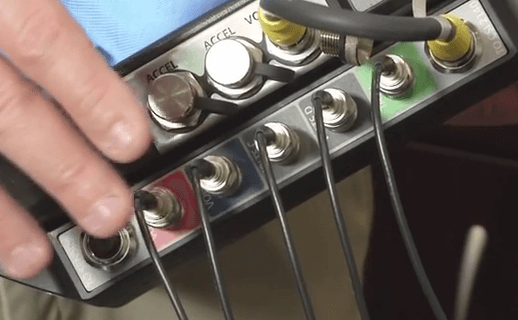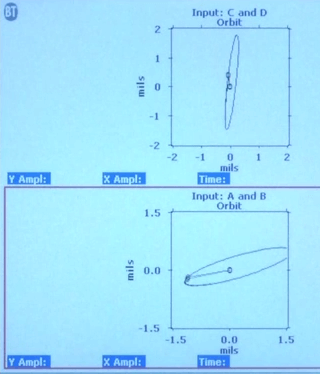
Drew Mackley
Product Line Manager
Emerson’s Drew Mackley explains how this type of bearing is mostly found in turbomachinery and involves displacement probes rather than accelerometers commonly used in other types of rotating machinery.
These displacement probes typically are inputs into online protection systems to shut down the turbomachinery if vibration levels exceed a certain threshold.
For the demonstration, Drew shows a four-channel adapter to collect volts and tachometer information from displacement probes on two sleeve bearings. The displacement signals generate dual orbits useful in assessing shaft or sleeve bearing condition.
 What’s missing in some machinery protection systems is the ability to predict problems before they lead to a shutdown condition. Drew shows the x- and y-displacement signals—orbit 1 and orbit 2—coming from the machinery protection system from each of the two sleeves into the CSI 2140 portable vibration monitor as well as the speed of the machine from the tachometer.
What’s missing in some machinery protection systems is the ability to predict problems before they lead to a shutdown condition. Drew shows the x- and y-displacement signals—orbit 1 and orbit 2—coming from the machinery protection system from each of the two sleeves into the CSI 2140 portable vibration monitor as well as the speed of the machine from the tachometer.
Changes in the shape of the orbit plots convey potential issues in the condition of the rotor such as shaft rub or operating near areas of resonance.
To connect and interact with other reliability professionals, visit the Asset Optimization, Maintenance and Reliability track in the Emerson Exchange 365 community.





